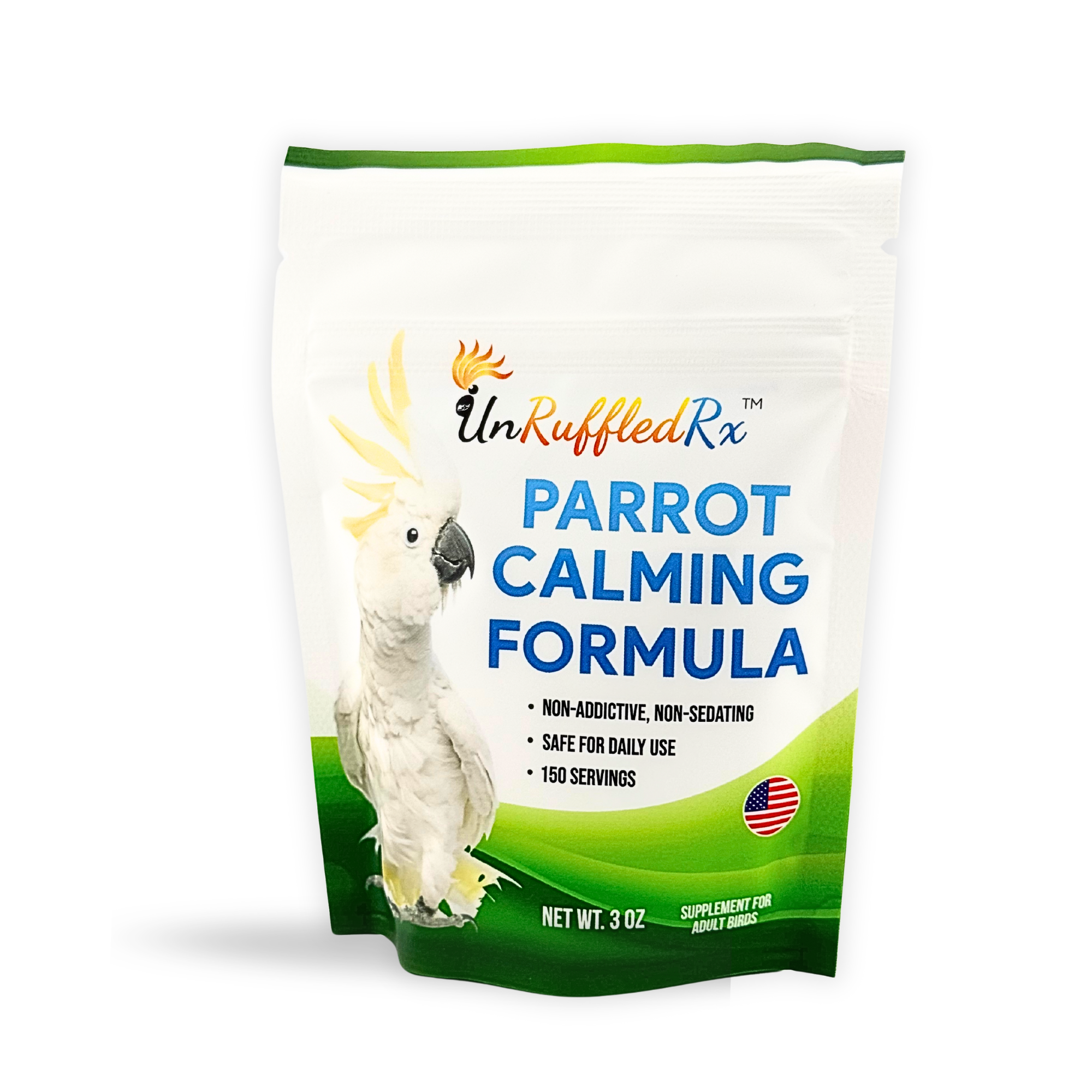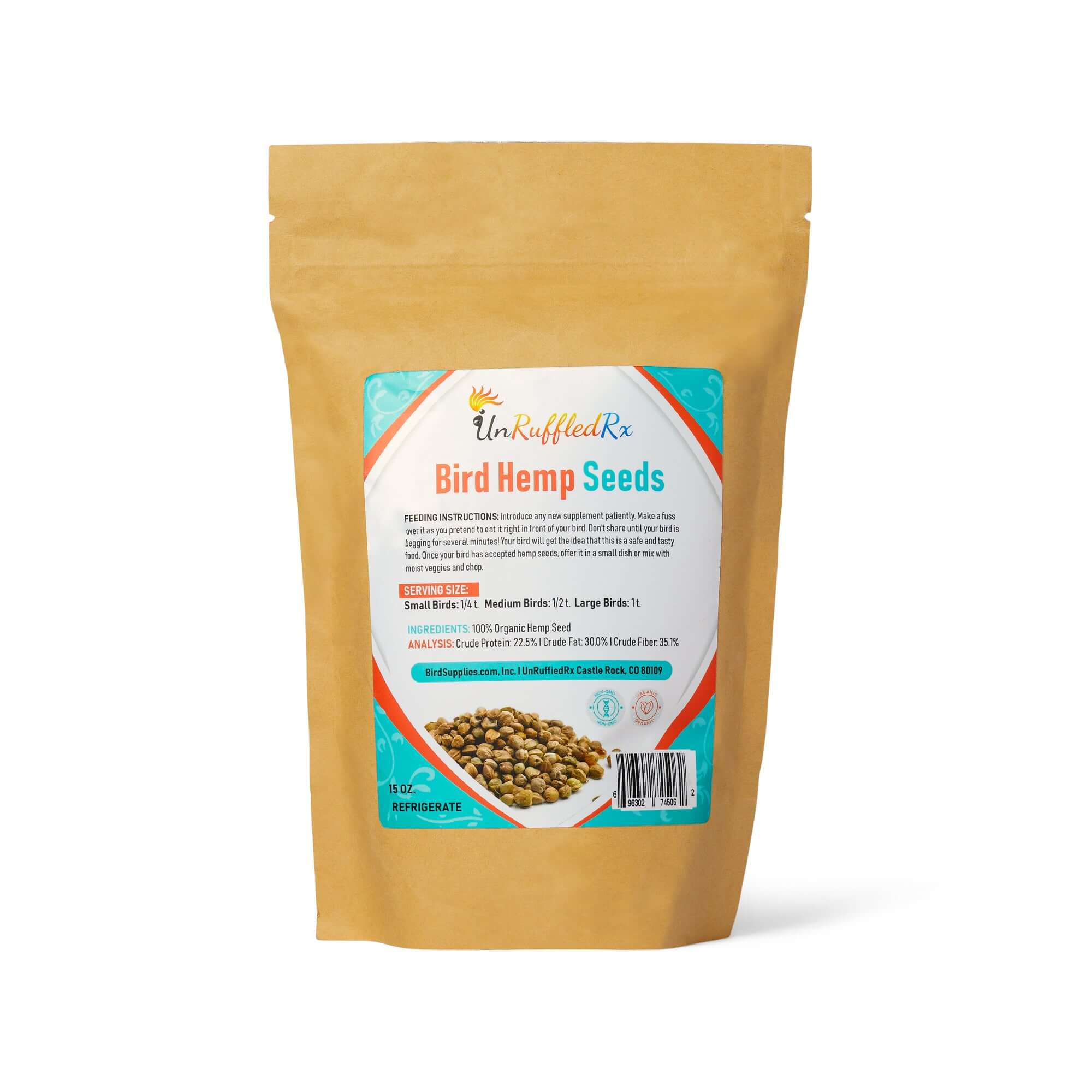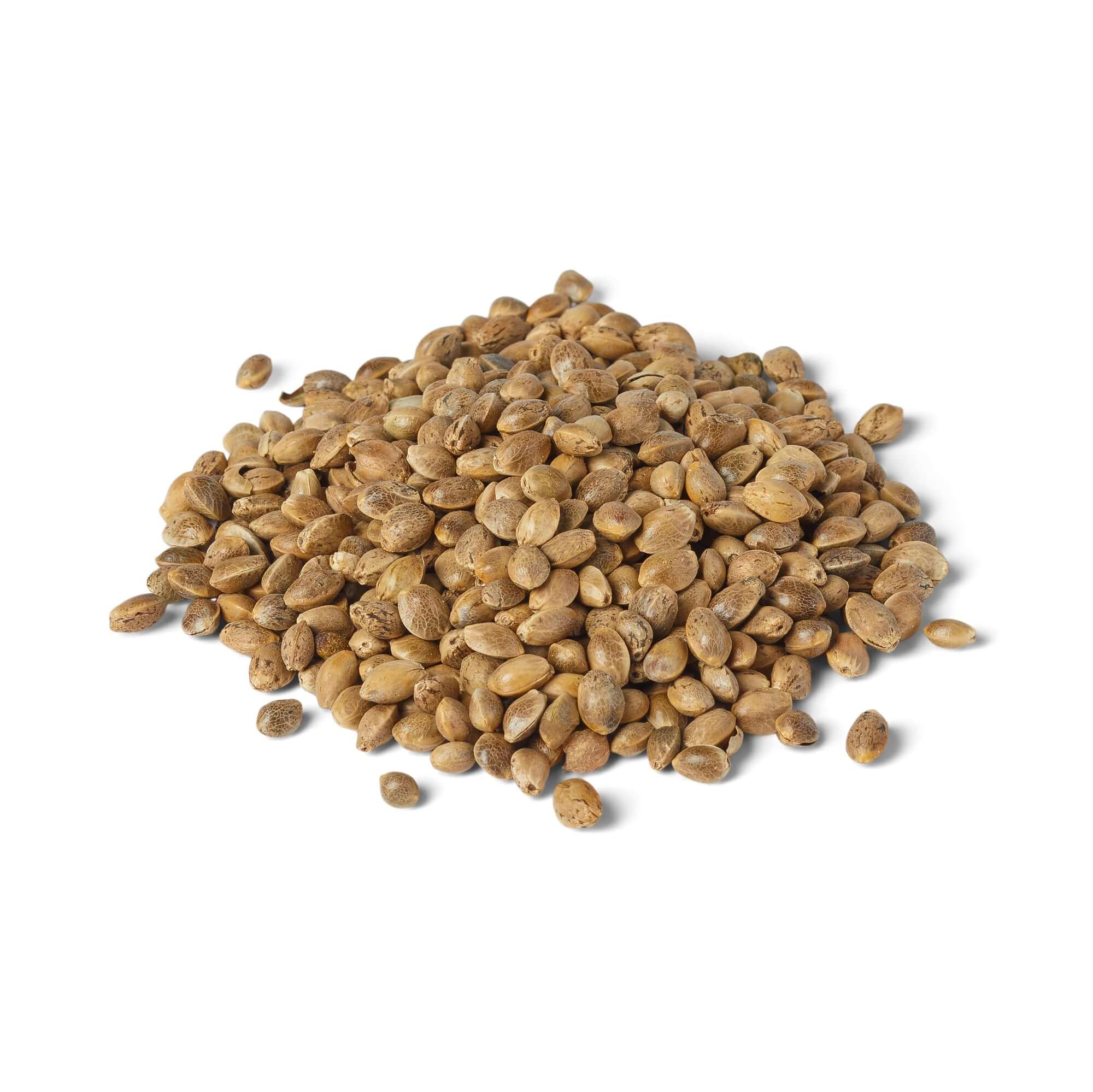Table of Contents
- Understanding Parrot Screaming
- Loudness by Species
- Causes for Excessive Bird Screaming
- A-B-C Model of Bird Behavior Change
- 4 Week Behavior Plan to Reduce Screaming
- FAQs
Is bird screaming driving you up the wall? You get on a phone call and the screaming starts. Your partner comes into the room, and your bird goes batty. Or, every time you walk out of the room, it’s like a siren going off. Sound familiar?
You're not alone! Many parrot owners deal with these noisy outbursts from their screaming birds. But don't worry—we're here to help you bring calm to the chaos.
In this guide, you'll learn the basics of bird behavior and positive reinforcement techniques. Discover what triggers bird screaming and how to address it effectively.
Take our interactive quiz to uncover the root causes of bird screaming and explore our FAQ section for answers to common questions. Ready to bring some peace and quiet back into your home? Let's get started!
Understanding Parrot Screaming
Natural Communication In The Wild
Parrots are social animals that use their voices to stay connected with their flock and especially, their mate. These loud calls help them keep track of each other, even when they're far apart. By calling out, parrots maintain their close relationships and coordinate where to go. When your parrot calls to you, it's simply following its instinctual need to stay in touch.
In the wild, these calls are crucial for their safety and well-being. They use them to warn each other of danger, find food, and let their flock know where they are. Unless taught otherwise, your parrot will naturally call to you for the same reasons. Understanding this can help us better care for our pet parrots and meet their needs.
Behavioral Needs and Environmental Enrichment
Bringing an exotic pet like a parrot into our homes means taking on the responsibility to meet their needs. These birds bond deeply with their human companions, and it's important to offer them plenty of enrichment and targeted training. By doing so, we can ensure they lead fulfilling and stimulating lives, just like they would in the wild.
To keep your parrot socially and mentally engaged, there are three key things you can offer frequently.
First, provide a variety of toys that challenge their problem-solving skills and keep them entertained. Rotate these toys regularly to keep their environment interesting.
Second, incorporate foraging activities by hiding treats around their cage or in specially designed foraging toys, encouraging natural behaviors like searching and exploring.
Third, ensure they have ample space to move and exercise, whether through a large cage, supervised out-of-cage time, or even training sessions that include flying exercises. These activities help mimic the stimulation they would get in the wild, keeping your parrot happy and healthy.
The Loudest to Quietest Birds as Pets
Some screaming is totally normal—especially in flock animals like parrots. It’s their way of checking in with the flock, just like birds do in the wild at dawn and dusk. Instead of shutting it down, lean into it! Join the fun with a quick dance party, flap session, or call-and-response game. You’ll meet two big needs at once: bonding and exercise. It’s kind of like helping a toddler get their wiggles out—you’re connecting, burning off steam, and showing your bird you’re part of the flock too.
| Bird Species | Genus | Flock Calling Frequency | Decibels | Notes |
|---|---|---|---|---|
| Cockatoos | N/A | High | Up to 135 (✈️ Jet engine) |
Extremely loud, affectionate nature, loud calls to seek attention or when bored. |
| Aratinga Conures (Sun, Nanday) | Aratinga | High | Up to 120 | Bright plumage, powerful voice, loudest conures, frequent flock calling. |
| Eupsittula Conures (Orange-front, Brown-throat) | Eupsittula | Moderate | Up to 115 | Variable loudness, some species like brown-throats are louder. |
| Psittacara Conures (Cherry-head) | Psittacara | High | Up to 110 (📢 Loud speaker) |
Known for high flock calling frequency, based on Telegraph Hill population studies. |
| Thectocercus acuticaudatus (Blue-crowned) | Thectocercus | Moderate | Up to 105 | Moderate call volume, commonly known as blue-crowned conures. |
| Macaws | N/A | High | Up to 105 | Large birds, loud morning and evening calls, capable of mimicry. |
| Cyanoliseus patagonus (Patagonian) | Cyanoliseus | Moderate | Up to 100 | Moderate volume, videos suggest moderate flock calling frequency. |
| African Gray Parrots | N/A | High | Up to 70 | Constant chatter, excellent mimics, frequent vocalizations throughout the day. |
| Pyrhurra Conures (Green-cheek) | Pyrhurra | Variable | Up to 70 | Generally quiet conures, low call volume, may vary by individual. |
| Budgerigars (Budgies) | N/A | Low to Moderate | Up to 70 | Popular and relatively quiet, chirps and chatters, quieter in pairs or solo. |
| Cockatiels | N/A | Moderate | Up to 70 | Larger than finches and budgies, chirps and whistles at a low volume, mimics sounds. |
| Finch | N/A | Low | Up to 60 | Tiny birds with tiny voices, pleasant chirps, and peeps, generally hands-off. |
| Canary | N/A | Low | Up to 65 | Known for their melodious songs, males sing but volume is kept to a minimum. |
| Parrotlet | N/A | Low | Up to 65 | Soft chatter and chirps, require daily interaction, full of energy and spunk. |
| Senegal Parrot | N/A | Low | Up to 70 | Calm and quiet demeanor, less likely to screech, enjoys socialization and toys. |
| Bourke's Parakeet | N/A | Low to Moderate | Up to 65 | Quiet and gentle demeanor, most active and chatty early morning and dusk. |
| Dove | N/A | Low | Up to 65 (🎸 Loud Music) |
Sweet and gentle, known for constant cooing vocalizations. |
Even the quietest birds will vocalize louder than expected, so it's important to understand and accept this part of their nature. Knowing what to expect can help you create a harmonious environment for both you and your feathered friend.
All birds have an instinct to be noisy and call out to their flock. This natural behavior helps them communicate, stay connected, and ensure their safety in the wild. When choosing a pet bird, consider your tolerance for noise and how it fits with your lifestyle.
Excessive bird screaming is when a bird's vocalizations become frequent, loud, and disruptive beyond what is normal for its species. It's important to understand that some level of noise is natural and healthy for birds, as they use vocalizations to communicate, express themselves, and stay connected with their flock.
However, excessive screaming is different; it often indicates that the bird is stressed, bored, or seeking attention. It is not just the occasional loud call or chatter that all birds do. Recognizing the difference helps in addressing the underlying issues causing the excessive noise.
Causes for Excessive Bird Screaming
Excessive bird screaming is usually not due to a health condition. In fact, sick parrots tend to be quieter because they don’t want to draw attention to themselves.
Often, this loud behavior has been accidentally encouraged by their owners. It’s important to approach this with empathy and understand how our actions may have unintentionally taught them to scream. The good news is that this behavior can be retrained, which we'll discuss in a section below.
-
Accidental Training: Birds often scream because they’ve learned it gets a reaction from their owners, whether it's attention, food, or play.
-
Hormones: During breeding season, hormonal changes can increase vocalizations as birds try to attract a mate or assert dominance.
-
Communication: Birds are social creatures and may scream to establish their place in the flock, including their human family.
-
Boredom: Without enough mental and physical stimulation, birds can become bored and frustrated, leading to excessive screaming.
-
Lack of Intentional Training: Without intentional training and guidance, birds may not know other, more desirable behaviors to get their needs met.
-
A Loud Family: Birds often mimic their environment. If they live in a noisy household, they may join in with their own loud calls. That's flock behavior!
- Fear / Change: Birds thrive on routine. An unpredictable schedule can make them anxious and more likely to scream for attention and reassurance.
A-B-C Model of Bird Behavior Change
Bird behavior always has a trigger. That quiz you just took? It probably gave you a few “aha” moments about what sets your bird off. Did any of those feel spot-on?
Identifying Triggers and Root Causes of Screaming
Bird behavior doesn’t just happen out of nowhere. There’s always something that kicks it off. In behavior science, we call that the antecedent—but think of it as the “trigger.” Just like a toddler might melt down when they’re overtired or hungry, a bird might start screaming because something excited, scared, or frustrated them.
Triggers can be super simple: You walked out of the room, covered the cage too early, changed their routine, or didn’t respond when they called. Some birds scream when they’re bored and want interaction. Others scream when they’re overstimulated and need a break. The key is to watch what’s happening right before the noise starts—that’s your clue.
Once you spot the pattern, you can make little changes to reduce those triggers. Maybe that means more quiet playtime, better sleep, or giving your bird a job (like foraging or training). You're not trying to stop them from being a bird—you’re helping them handle life a little better, just like you'd do with a kid.
What Did the Bird Get Out of It? (AKA the “Consequence”)
In the ABC model, the consequence is just a fancy word for “what happened next.” It’s what your bird got (or didn’t get) after the screaming. Maybe you walked over, started talking to it, gave a treat, or even yelled. Believe it or not, all of those reactions can actually reinforce the behavior—even the negative ones.
Birds are super smart. If they scream and it gets them what they want — they might think, “Cool, that worked. I’ll do it again!” Consequences don’t have to be rewards in the traditional sense. Sometimes, just being noticed or causing a little action is enough to keep a behavior going.
This is where your power lies. If you stop reacting to screaming and start giving attention to calm behavior instead, your bird will start shifting gears. It’s not about punishment — it’s about teaching your bird a better way to ask for what they want. Quiet gets the goodies, not the noise.

Function of the Behavior
Every loud squawk, shriek, or whistle is your bird trying to *get something*. That’s called the function of the behavior—it’s just fancy talk for “what’s in it for the bird?”
Some birds scream to get your attention. Others want to dodge a boring cage or ask for their favorite treat. And yep, some just like the sound of their own voice. Once you figure out why the screaming happens, you can start changing the game.
Knowing the function is your shortcut to better behavior. You’ll be able to offer better ways for your bird to get what they want—without the ear-splitting noise.
Here’s a table to explain the four functions of behavior:
| Function of Behavior | Description | Example |
|---|---|---|
| Attention | The bird wants attention from you or others. | Screaming until you come over and talk to it. |
| Escape Something Undesired | The bird wants to get away from an unpleasant situation or avoid doing something it dislikes. | Screaming when it’s put back in the cage to get let out again. |
| Access to Tangibles | The bird wants access to a specific item or food. | Screaming to get a favorite toy or treat. |
| Sensory Stimulation | The bird engages in the behavior because it feels good or is stimulating. | Screaming because it enjoys the sound or feeling of its own voice. |
Observing and Replacing Behaviors
Start observing how your reactions to your bird's screaming might fulfill one or more of these functions. Understanding what your bird is trying to achieve with its behavior will help you address the root cause.
Take time to figure out other more desirable behaviors that you can teach and reinforce, which fulfill the same function. Here are some examples:
- Attention: If your bird screams for attention, teach it to make a quieter sound or perform a trick for attention. Reward the quieter sound or trick with lots of praise and treats.
- Escape Something Undesired: If your bird screams to avoid being in the cage, make the cage a more pleasant place with toys and treats. Gradually increase the time in the cage, rewarding calm behavior.
- Access to Tangibles: If your bird screams for a toy or treat, teach it to ask for it in a quieter way, like ringing a bell. Reward the bird with the desired item when it uses the new behavior.
By identifying the function of your bird's behavior and using positive reinforcement to teach and encourage more desirable behaviors, you can reduce excessive screaming and create a happier, more harmonious environment for both you and your bird.
This workbook-style plan is built entirely on ABA (Applied Behavior Analysis) strategies. Whether you're dealing with a screaming bird, loud parrot, or excessive noise, this step-by-step guide will help you teach your bird quieter, more desirable behaviors.
🗓️ Week 1: Track Screaming Behavior
- Track 3–5 scream events per day using the ABC model:
- A (Antecedent): What happened right before the scream?
-
B (Behavior): Create baseline information about the screaming behavior so that at the end of your challenge, you'll know if you've made improvements. We want measurements for the frequency, intensity and duration of each screaming episode this week.
- Frequency: How many times did your bird scream today?
- Intensity: How loud was the screaming episode?
- Duration: How long did the episode last?
- C (Consequence): What did you do next?
- Ignore all loud screaming—no eye contact, no talking, no approaching.
- Catch and reward quiet behavior within 3 seconds using a treat or happy voice.
- Add 2–3 new foraging toys and rotate every other day.
End-of-Week Wrap-Up:
• What are your bird’s top screaming triggers?
• What consequence might be reinforcing the behavior?
• How did it feel to ignore the screaming?
• Did you successfully reward calm behavior?
🗓️ Week 2: Change the Environment
- Move cage to a calm, low-traffic area.
- Ensure 12–14 hours of dark, quiet sleep nightly.
- Offer a bath or misting 3x this week to promote calm, preening behavior.
- Introduce one new destructible or shreddable toy.
- Keep logging ABCs and look for new patterns.
End-of-Week Wrap-Up:
• Did your bird’s triggers change this week?
• Are you still reinforcing screaming without realizing it?
• What change helped the most?
🗓️ Week 3: Teach Replacement Behaviors
- Train these 4 simple skills using positive reinforcement:
- Step up
- Touch a target stick
- Allow misting calmly
- Step down into the cage
- Practice short 3–5 min sessions daily and reward all success quickly.
- Redirect screaming into known behaviors when possible.
End-of-Week Wrap-Up:
• Which skills did your bird learn most easily?
• Did teaching new behaviors reduce screaming?
• What reinforcers worked best?
🗓️ Week 4: Build Confidence & Independence
- Increase reinforcement challenge:
- Ask for 2 behaviors before giving a treat.
- Gradually increase time between reward and behavior.
- Reward independence: playing, preening, exploring calmly.
- Teach “stationing” on a perch during family routines.
End-of-Week Wrap-Up:
• What behaviors is your bird now doing without prompts?
• Which positive behaviors have replaced the screaming?
• Does your bird seem more confident?
🗓️ Week 5: Reflection & Maintenance
Review your ABC log from Week 1—What changes in terms of how frequently the behavior is happening have you noticed
FAQ's About Bird Screaming
Here are 5 simple behaviors you can teach to replace screaming:
1. A signature whistle: Whistle back and reward your bird when it mimics or initiates a “where are you?” whistle instead of screaming.
2. Ring a toy bell: Hang a soft bell or rattle toy and reinforce your bird when it uses that to ask for interaction.
3. Target training: Teach your bird to touch a stick or finger on cue—then respond with praise or a quick visit.
4. Talking cues: If your bird says a word like “Hello” or “Step up,” reward that cue with attention instead of reacting to noise.
5. Wave or body gestures: Train a cute gesture like a wave or head bob to replace yelling for attention. Reward it consistently!
A screaming bird isn’t trying to be bad—it’s trying to connect. Let’s teach them a better way to get what they want.In conclusion...
You’ve discovered the secrets behind parrot vocalizations and learned which species are the loudest. You've delved into the health and behavioral causes of excessive noise, taken a quiz to pinpoint specific triggers, and unraveled how accidental training impacts your bird. Armed with strategies to stop the screaming, identify and remove triggers, and teach your bird new, quieter behaviors, you're all set for a peaceful and happy home.
Related Posts
Parrot Behavior Training: Your Top 9 Questions Answered
6 Tips on How to Keep Your Bird in Good Behavior
5 Ways To Tame a Fearful Bird for a Happier Pet
References
Gavagai. (2017, March 23). Noise levels by and within genus [Thread]. ParrotForums. https://www.parrotforums.com/threads/noise-levels-by-and-within-genus.67872/
Jack. (2023, August 21). Echoes of Distress: Tips for Dealing with a Screaming Bird. Ask About Birds. Retrieved from https://askaboutbirds.com/tips-for-dealing-with-a-screaming-bird/
Kaytee. (n.d.). Quiet pet birds: Loudest to quietest. Kaytee. Retrieved from https://www.kaytee.com/learn-care/pet-birds/quiet-pet-birds
Kalhagen, A. (2024, July 18). 8 top quiet pet bird species. The Spruce Pets. https://www.thesprucepets.com/quiet-pet-bird-species-390545
Lester, J. (2023, July 17). 10 Reasons Why Your Cockatiel is Screaming All the Time. Warmly Pet. Retrieved from https://www.warmlypet.com/reasons-why-your-cockatiel-is-screaming/
Van Voorhies, C. (n.d.). HELP! MY BIRD IS SCREAMING AND SHE WON’T SHUT-UP. Florida Veterinary Behavior Service. Retrieved from https://flvetbehavior.com/help-my-bird-is-screaming-and-she-wont-shut-up/
Link to this blog
Burroughs, D. (2024, July 26). Your ultimate guide to stop bird screaming. BirdSupplies.com. https://birdsupplies.com/blogs/news/your-ultimate-guide-to-stop-bird-screaming
Diane Burroughs, LCSW, is a licensed psychotherapist specializing in avian anxiety disorders, nervous bird behaviors, and overall bird care. With training in ABA therapy and certification in Nutrition For Mental Health, Diane has authored several books on bird behavior and offers expert consultations for resolving issues like feather plucking and bird anxiety.
She founded UnRuffledRx Science-backed Parrot Wellness Supplies, a trusted brand of products recommended by top avian veterinarians across the United States and available internationally. These include bird collars designed for feather plucking. Diane also provides behavior consultations to address nervous bird behavior and other challenges.
She founded UnRuffledRx Science-backed Parrot Wellness Supplies, a trusted brand of products recommended by top avian veterinarians across the United States and available internationally. These include bird collars designed for feather plucking. Diane also provides behavior consultations to address nervous bird behavior and other challenges.
Her work has been featured in the Journal of Avian Medicine and Surgery and presented at Exoticscon. Diane also mediates the Feather Plucking Help group on Facebook, offering support to parrot owners. With over 30 years of experience, Diane has developed thousands of successful individualized behavior plans, promoting parrot wellness and excellent bird care.
TAGS: #BirdScreaming #ScreamingBird #LoudBird
SHARING IS CARING! PLEASE SHARE ON YOUR FAVORITE SOCIAL MEDIA NOW!














